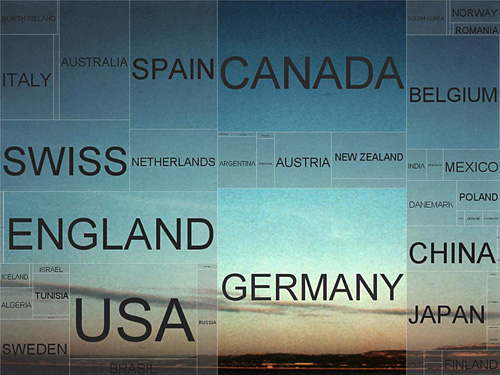Distribution of the foreign customers at a particular youth hostel
Two pieces representing youth hostel data from Julien Bayle. Both adaptations of the code found in Visualizing Data. The first a map:

The map looks like most maps of data connected to a world map, but the second representation uses a treemap, which is much more effective (meaning that it answers his question much more directly).

The image as background is a nice technique, since if you’re not using colors to differentiate individual sectors, the treemap tends to be dominated by the outlines around the squares (search for treemap images and you’ll see what I mean). The background image lets you use the border lines, but the visual weight of the image prevents them from being in the foreground.
Anyone else with adaptations? Pass them along.

